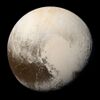Astronomy:(589683) 2010 RF43
| Discovery[1][2] | |
|---|---|
| Discovered by | D. L. Rabinowitz M. Schwamb S. Tourtellotte |
| Discovery site | La Silla Obs. |
| Discovery date | 6 September 2010 |
| Designations | |
| (589683) 2010 RF43 | |
| 2010 RF43 | |
| Minor planet category | TNO[3][4] · SDO[5] · distant[1] |
| Orbital characteristics[3] | |
| Epoch 31 May 2020 (JD 2459000.5) | |
| Uncertainty parameter 2 | |
| Observation arc | 46.17 yr (~16,860 days) |
| Earliest precovery date | 19 August 1976[1] |
| |{{{apsis}}}|helion}} | 61.903 AU |
| |{{{apsis}}}|helion}} | 37.482 AU |
| 49.692 AU | |
| Eccentricity | 0.2457 |
| Orbital period | 350.30 yr (127,948 d) |
| Mean anomaly | 97.520° |
| Mean motion | 0° 0m 10.08s / day |
| Inclination | 30.638° |
| Longitude of ascending node | 25.320° |
| 193.480° | |
| Physical characteristics | |
| Mean diameter | 636 km (estimate)[6] 643 km (estimate)[7] ≈770 km (estimate)[4] |
| Geometric albedo | 0.09 (assumed)[4] 0.10 (assumed)[6] 0.11 (assumed)[7] |
| Absolute magnitude (H) | 3.9[3] · 4.0[7] · 4.1[6] |
(589683) 2010 RF43 (provisional designation 2010 RF43) is a large trans-Neptunian object orbiting in the scattered disc in the outermost regions of the Solar System. The object was discovered on 9 September 2010, by American astronomers David Rabinowitz, Megan Schwamb and Suzanne Tourtellotte at ESO's La Silla Observatory in northern Chile.[1]
Orbit and classification
2010 RF43 orbits the Sun at a distance of 37.5–61.9 AU once every 350 years and 4 months (127,948 days; semi-major axis of 49.7 AU). Its orbit has an eccentricity of 0.25 and an inclination of 31° with respect to the ecliptic.[3] The body's observation arc begins with a precovery observation taken at Siding Spring Observatory in August 1976.[1]
Due to its relatively high eccentricity and inclination, it is an object of the scattered disc rather than one of the regular Kuiper belt.[2][8] Its perihelion of 37.5 AU is also too low to make it a detached object, which typically stay above 40 AU and never come close to the orbit of Neptune.
Numbering and naming
This minor planet was numbered by the Minor Planet Center on 20 September 2021, receiving the number (589683) in the minor planet catalog (M.P.C. 135075).[9] (As of 2021), it has not been named.[1]
Physical characteristics
Diameter and albedo
Based on an absolute magnitude of 3.9,[3] and an assumed albedo of 0.09, the Johnston's archive estimates a mean-diameter of approximately 770 kilometers (480 mi).[4]
The Collaborative Asteroid Lightcurve Link assumes an albedo of 0.10 and calculates a diameter of 636 kilometers (395 mi) based on an absolute magnitude of 4.1.[6]
Rotation period
As of 2020, no rotational lightcurve of this object has been obtained from photometric observations. The object's rotation period, pole and shape remain unknown.[3][6]
References
- ↑ 1.0 1.1 1.2 1.3 1.4 1.5 "2010 RF43". Minor Planet Center. http://www.minorplanetcenter.net/db_search/show_object?object_id=2010+RF43.
- ↑ 2.0 2.1 "List Of Centaurs and Scattered-Disk Objects". Minor Planet Center. https://www.minorplanetcenter.net/iau/lists/t_centaurs.html.
- ↑ 3.0 3.1 3.2 3.3 3.4 3.5 "JPL Small-Body Database Browser: (2010 RF43)". Jet Propulsion Laboratory. https://ssd.jpl.nasa.gov/sbdb.cgi?sstr=3545742.
- ↑ 4.0 4.1 4.2 4.3 Johnston, Wm. Robert (29 August 2021). "List of Known Trans-Neptunian Objects". Johnston's Archive. http://www.johnstonsarchive.net/astro/tnoslist.html.
- ↑ Buie, Marc W.. "Orbit Fit and Astrometric record for 10RF43". SwRI (Space Science Department). http://www.boulder.swri.edu/~buie/kbo/astrom/10RF43.html.
- ↑ 6.0 6.1 6.2 6.3 6.4 "LCDB Data for (2010+RF43)". Asteroid Lightcurve Database (LCDB). http://www.minorplanet.info/PHP/generateOneAsteroidInfo.php?AstInfo=0%7C2010+RF43.
- ↑ 7.0 7.1 7.2 Brown, Michael E.. "How many dwarf planets are there in the outer solar system?". California Institute of Technology. http://web.gps.caltech.edu/~mbrown/dps.html.
- ↑ "List Of Transneptunian Objects". Minor Planet Center. http://www.minorplanetcenter.org/iau/lists/TNOs.html.
- ↑ "MPC/MPO/MPS Archive". Minor Planet Center. https://www.minorplanetcenter.net/iau/ECS/MPCArchive/MPCArchive_TBL.html.
External links
- MPEC 2011-U09 : 2010 RF43, Minor Planet Electronic Circular, 17 October 2011
- (589683) 2010 RF43 at AstDyS-2, Asteroids—Dynamic Site
- (589683) 2010 RF43 at the JPL Small-Body Database
 |



